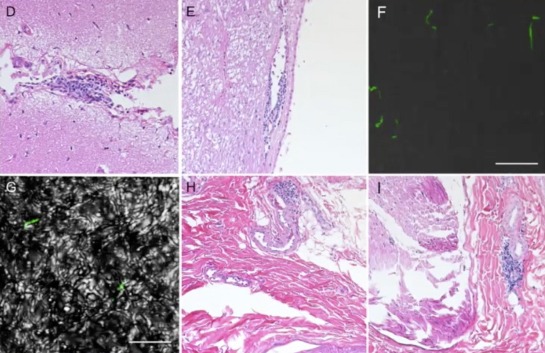Instructor
Monica E. Embers, PhD
Associate Professor in the Division of Immunology
Director of Vector-borne Disease Research
Tulane National Primate Research Center
Description
This module presents human Lyme disease as a systemic infection with inflammatory pathology. The recommended treatment by two medical associations is covered, with an overview of antibiotic efficacy and a description of antibiotic tolerant-persisters. Findings from nonhuman primate studies are presented, as well as treatment goals and new strategies for eradication of the Lyme disease pathogen.
Learning objectives
- To review the treatment guidelines for Lyme disease (IDSA and ILADS)
- To define and describe antibiotic tolerance vs. antibiotic resistance
- To highlight key studies on antibiotic efficacy
- To consider new strategies aimed at curing the infection
This session, Antibiotic efficacy for treatment of Lyme disease, is approved for 0.5 enduring AAFP Prescribed credits.
AAFP Prescribed credit is accepted by the American Medical Association as equivalent to AMA PRA Category 1 credit(s)™ toward the AMA Physician’s Recognition Award. When applying for the AMA PRA, Prescribed credit earned must be reported as Prescribed, not as Category 1.
The AAFP has reviewed One Health Medical Education for a Changing Climate and deemed it acceptable for AAFP credit. Term of approval is from 01/02/2024 to 01/01/2025. Physicians should claim only the credit commensurate with the extent of their participation in the activity.
Evidence-based bibliography for further study
Bockenstedt, L., et al. (2002). “Detection of Attenuated, Noninfectious Spirochetes in Borrelia burgdorferi-Infected Mice after Antibiotic Treatment.” The Journal of Infectious Diseases 186(10): 1430-1437.
Hodzic, E., et al. (2008). “Persistence of Borrelia burgdorferi following antibiotic treatment in mice.” Antimicrobial Agents & Chemotherapy 52(5): 1728-1736.
Barthold, S. W., et al. (2010). “Ineffectiveness of tigecycline against persistent Borrelia burgdorferi.” Antimicrobial Agents & Chemotherapy 54(2): 643-651.
Embers, M. E., et al. (2012). “Persistence of Borrelia burgdorferi in rhesus macaques following antibiotic treatment of disseminated infection.” PLoS ONE 7(1): e29914.
Bockenstedt, L. K., et al. (2012). “Spirochete antigens persist near cartilage after murine Lyme borreliosis therapy.” The Journal of Clinical Investigation 122(7): 2652-2660.
Hodzic, E., et al. (2014). “Resurgence of Persisting Non-Cultivable Borrelia burgdorferi following Antibiotic Treatment in Mice.” PLoS ONE 9(1): e86907.
Wormser, G. P., et al. (2012). “Critical analysis of treatment trials of rhesus macaques infected with Borrelia burgdorferi reveals important flaws in experimental design.” Vector Borne Zoonotic Dis 12(7): 535-538.
Wormser, G., et al. (2000). “Practice Guidelines for the Treatment of Lyme Disease.” Clinical Infectious Diseases 31(s1): 1-14.
Shor S, Green C, Szantyr B, Phillips S, Liegner K, Burrascano JJ Jr, Bransfield R, Maloney EL. Chronic Lyme Disease: An Evidence-Based Definition by the ILADS Working Group. Antibiotics (Basel). 2019 Dec 16;8(4):269. doi: 10.3390/antibiotics8040269. PMID: 31888310; PMCID: PMC6963229.
Embers, M. E., et al. (2017). “Variable manifestations, diverse seroreactivity and post-treatment persistence in non-human primates exposed to Borrelia burgdorferi by tick feeding.” PLoS ONE 12(12): e0189071.
Crossland, N. A., et al. (2018). “Late Disseminated Lyme Disease: Associated Pathology and Spirochete Persistence Posttreatment in Rhesus Macaques.” The American Journal of Pathology 188(3): 672-682.


